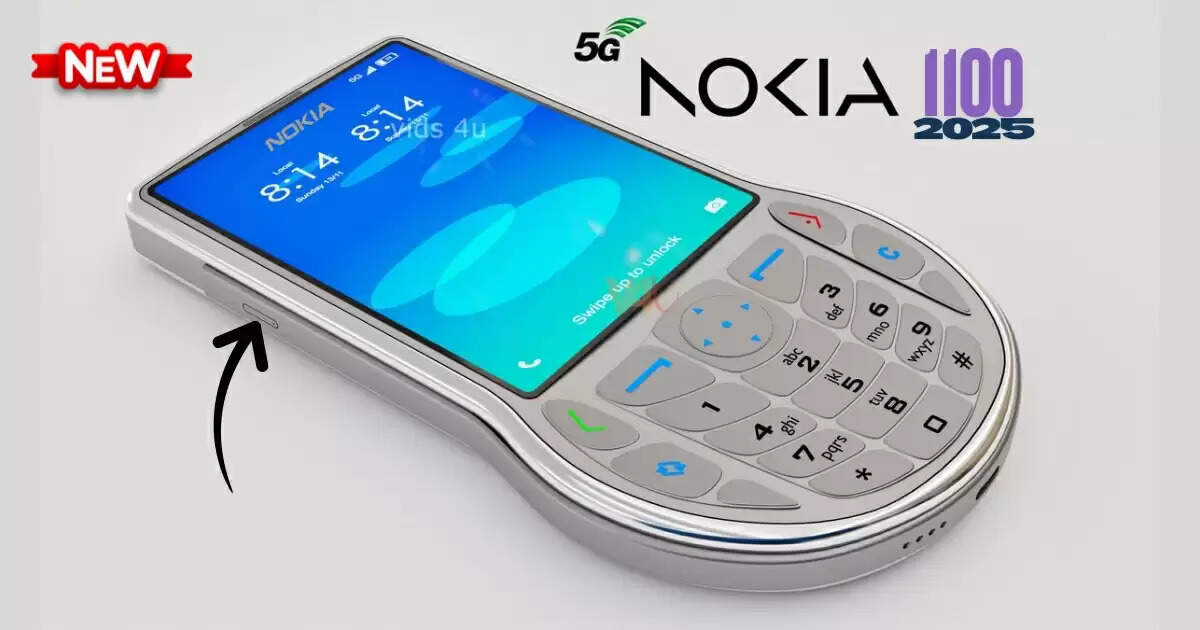Nokia 1100 4G: Bridging the Gap Between Iconic Simplicity and Modern Connectivity

While there isn't a specific In this article, we'll delve into the legacy of the Nokia 1100, examine the evolution of feature phones in the 4G era, and explore how Nokia's current lineup of 4G-enabled feature phones carries forward the torch lit by the iconic 1100.
- The Legacy of the Nokia 1100: A Foundation of Simplicity and Reliability
The Nokia 1100, released in the third quarter of 2003, was a masterclass in functional minimalism. Its design philosophy prioritized durability, ease of use, and long battery life – qualities that resonated with users worldwide, especially in developing markets.
Key features that defined the Nokia 1100 included:
a) Dust-resistant keypad: Designed to withstand challenging environments, making it ideal for users in arid or industrial areas.
b) Non-slip sides: Ensuring a secure grip even in humid conditions.
c) Built-in flashlight: A simple yet transformative feature that doubled the phone's utility in areas with unreliable electricity.
d) Monophonic ringtones: One of the last Nokia phones to use this technology, contributing to its exceptional battery life.
e) Long battery life: With up to 400 hours of standby time, the Nokia 1100 was a reliable communication tool in areas with limited charging opportunities.
f) Simple user interface: A stripped-down version of Nokia's Series 30 software made the phone accessible to first-time mobile users.
These features, combined with its affordable price point, made the Nokia 1100 a game-changer in the mobile industry. It democratized mobile communication, bringing it to millions of people who previously couldn't afford or operate more complex devices.
- The Evolution of Feature Phones in the 4G Era
As smartphones began to dominate the market, many predicted the death of feature phones. However, the demand for simple, reliable, and affordable communication devices never truly disappeared. Instead, feature phones evolved, incorporating modern connectivity options while maintaining their core principles of simplicity and durability.
The advent of 4G technology presented both a challenge and an opportunity for feature phone manufacturers. How could they integrate high-speed internet capabilities without compromising the simplicity and affordability that defined the category?
Nokia, under the stewardship of HMD Global, has been at the forefront of this evolution. The company has introduced a range of 4G-enabled feature phones that bridge the gap between the simplicity of devices like the 1100 and the connectivity demands of the modern world.
- The Nokia 110 4G: A Modern Interpretation of the 1100's Legacy
While not a direct successor to the 1100, the Nokia 110 4G embodies many of the principles that made its predecessor a global success. Let's examine how this modern feature phone carries forward the 1100's legacy while embracing 4G technology:
a) Design and Durability:
The Nokia 110 4G features a "nano pattern finish" that's scratch-resistant and comfortable to hold, echoing the 1100's focus on durability and ergonomics. The textured finish not only provides a premium look but also ensures a secure grip, much like the non-slip sides of the 1100.
Staying true to the 1100's philosophy, the 110 4G maintains a straightforward user interface. The device features a tactile keypad and ease-of-use features that make it accessible to a wide range of users, from tech-savvy individuals to those new to mobile technology.
c) Long Battery Life:
One of the 1100's most celebrated features was its exceptional battery life. The Nokia 110 4G continues this tradition with a 1450 mAh battery that provides hours of talk time and weeks of standby time. The inclusion of a battery saver feature further extends the time between charges, ensuring that users remain connected even in areas with limited charging opportunities.
d) Essential Features:
Like the 1100, the 110 4G comes equipped with a built-in flashlight, recognizing the continued importance of this simple yet crucial feature in many parts of the world. It also includes an FM radio and MP3 player, expanding on the entertainment options while maintaining simplicity.
e) 4G Connectivity:
The most significant upgrade from the 1100 is, of course, the inclusion of 4G capabilities. This allows for faster internet browsing, improved call quality through HD voice support, and the ability to use modern communication apps.
f) Camera Functionality:
While the original 1100 didn't have a camera, the 110 4G includes a basic rear camera. This addition reflects the changing expectations of users while still maintaining the device's primary focus on communication rather than advanced multimedia features.
- Bridging the Digital Divide: The Role of 4G Feature Phones
The introduction of 4G-enabled feature phones like the Nokia 110 4G plays a crucial role in bridging the digital divide, much like the 1100 did in its time. These devices offer several advantages in developing markets and for specific user groups:
a) Affordable Internet Access:
By providing 4G connectivity in a more affordable package than smartphones, these feature phones open up high-speed internet access to a broader segment of the population.
b) Simplified User Experience:
For users who find smartphones overwhelming or unnecessary for their needs, 4G feature phones offer a simpler alternative that still provides essential connectivity.
c) Longer Battery Life:
In areas with unreliable electricity, the extended battery life of these devices ensures more consistent communication capabilities.
d) Durability:
Like the 1100, modern feature phones are often more rugged than their smartphone counterparts, making them suitable for use in challenging environments.
e) Digital Literacy Bridge:
These devices can serve as a stepping stone for users transitioning from basic phones to more advanced digital devices, helping to improve digital literacy in a manageable way.
- The Future of Feature Phones in a 5G World
As we look to the future, it's natural to wonder about the place of feature phones in a world increasingly dominated by 5G technology. However, the enduring appeal of devices like the Nokia 1100 and its modern 4G counterparts suggests that there will always be a market for simpler, more focused communication tools.
Potential developments in the feature phone market might include:
a) 5G Feature Phones:
As 5G networks become more widespread, we may see the introduction of 5G-enabled feature phones, offering even faster connectivity while maintaining simplicity.
b) Enhanced Security Features:
With growing concerns about digital privacy, future feature phones might incorporate advanced security measures to protect user data.
c) Eco-Friendly Designs:
Building on Nokia's commitment to sustainability, future feature phones might focus on using recycled materials and improving repairability, echoing the longevity of devices like the 1100.
d) Specialized Devices:
We might see feature phones designed for specific use cases or industries, combining 4G or 5G connectivity with rugged designs and specialized functions.
e) Integration with IoT:
Future feature phones could serve as simple control hubs for smart home devices, bridging the gap between traditional communication tools and the Internet of Things.
- Lessons from the 1100: Timeless Principles in a 4G World
The enduring legacy of the Nokia 1100 and its influence on modern 4G feature phones offer several lessons for the mobile industry:
a) Simplicity is Powerful:
In a world of increasingly complex devices, there's still immense value in products that do a few things exceptionally well.
b) Durability Matters:
The legendary toughness of the 1100 set a standard that users still appreciate. In an era of fragile glass smartphones, durable devices stand out.
c) Battery Life is King:
The ability to go days or weeks between charges remains a significant selling point, especially in markets with unreliable power infrastructure.
d) Accessibility is Key:
Devices that are easy to use and understand open up technology to a broader range of users, playing a crucial role in global connectivity.
e) Targeted Features:
The 1100's built-in flashlight showed how a simple, thoughtful feature could significantly enhance a device's value. Modern feature phones continue this tradition by including carefully chosen functions that add real-world utility.
- The Cultural Impact: From 1100 to 4G
The Nokia 1100 wasn't just a phone; it became a cultural icon, often referred to as the "kalashnikov of communication" due to its ruggedness and reliability. It played a crucial role in connecting millions of people in developing countries, enabling economic growth and social change.
Today's 4G feature phones aim to have a similar impact:
a) Digital Inclusion:
By providing affordable access to high-speed internet, these devices are helping to bring more people into the digital economy.
b) Preserving Digital Well-being:
In an era of smartphone addiction, 4G feature phones offer a way to stay connected without the constant distractions of apps and social media.
c) Empowering Small Businesses:
Just as the 1100 enabled entrepreneurs in developing markets, modern feature phones with 4G capabilities provide small business owners with essential tools for communication and basic internet access.
d) Educational Tools:
In regions where smartphones are too expensive for widespread educational use, 4G feature phones can serve as affordable devices for digital learning initiatives.
- Conclusion: The Spirit of the 1100 in the 4G Era
While we may never see a direct 4G version of the iconic Nokia 1100, its spirit lives on in the modern lineup of 4G-enabled feature phones. These devices continue to embody the principles of simplicity, reliability, and accessibility that made the 1100 a global phenomenon.
In a world obsessed with the latest smartphone features, the evolution of feature phones into the 4G era reminds us of the importance of focused, purposeful design. It shows us that innovation isn't always about adding more features, but sometimes about thoughtfully integrating new technologies into proven, user-friendly formats.
The success of 4G feature phones like the Nokia 110 4G demonstrates that there's still a significant market for devices that prioritize communication and essential connectivity over advanced multimedia capabilities. These phones play a crucial role in bridging the digital divide, much like the 1100 did in its time, bringing the benefits of high-speed internet to a broader global audience.
As we look to the future, the lessons learned from the Nokia 1100's success continue to shape the development of mobile technology. Whether it's in the form of specialized 5G devices, eco-friendly designs, or new approaches to digital well-being, the principles that made the 1100 a legend – simplicity, durability, and user-focused design – remain as relevant as ever.
In the end, the story of the Nokia 1100 and its modern 4G successors is not just about technology; it's about understanding and meeting the diverse needs of users around the world. It's a reminder that in the fast-paced world of mobile technology, sometimes the most impactful innovations are those that focus on the essentials, making technology accessible and useful to as many people as possible.
As we celebrate the legacy of the Nokia 1100 and explore the possibilities of 4G feature phones, we're reminded that true innovation often lies in finding the perfect balance between advanced technology and fundamental human needs. In this way, the spirit of the 1100 continues to inspire and guide the evolution of mobile communication, ensuring that in our increasingly connected world, no one is left behind.
